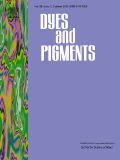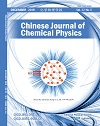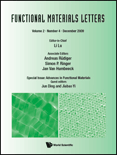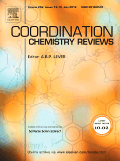
JOURNAL OF FLUORESCENCE
metrics 2024
Unveiling Breakthroughs in Biochemistry and Beyond
Introduction
Journal of Fluorescence, published by Springer/Plenum Publishers, is a pivotal interdisciplinary journal focusing on the application and innovation of fluorescence methodology across various scientific domains. With an ISSN of 1053-0509 and an E-ISSN of 1573-4994, this journal facilitates the dissemination of significant research findings from 1991 to 2024. The journal has established itself as a key resource in fields such as Biochemistry, Clinical Biochemistry, and Spectroscopy, demonstrating its importance by maintaining a Q3 ranking in multiple categories in 2023, including Biochemistry and Clinical Biochemistry. While currently not offering open access, the journal's commitment to scholarly rigor is reflected in its Scopus rankings and diverse readership, making it an essential source of knowledge for researchers, professionals, and students engaged in the rapidly evolving landscape of fluorescence research.
Metrics 2024
 0.39
0.39 2.60
2.60 2.60
2.60 81
81Metrics History
Rank 2024
Scopus
IF (Web Of Science)
JCI (Web Of Science)
Quartile History
Similar Journals

DYES AND PIGMENTS
Fostering Innovation in Dyes and Pigments for Diverse Applications.Dyes and Pigments, published by Elsevier Science Ltd, stands as a pivotal journal in the field of chemical engineering, particularly focusing on the realms of dyes and pigments as materials with extensive application across industries. Since its inception in 1980, this journal has evolved to capture cutting-edge research until 2024, making significant contributions to both the Chemical Engineering and Process Chemistry and Technology domains, where it currently ranks in the Q2 category. With an impressive Scopus ranking placing it among the top 82nd percentile in General Chemical Engineering and the top 73rd percentile in Process Chemistry and Technology, it demonstrates a robust commitment to publishing high-quality, impactful research. Although it does not offer an open-access option, its comprehensive content remains accessible to a wide audience of researchers, professionals, and students who are deeply engaged in the study and development of new dye and pigment technologies. Engaging with this journal not only enriches knowledge but also facilitates critical discussions that drive future innovations in chemical material sciences.

CHINESE JOURNAL OF CHEMICAL PHYSICS
Unveiling Breakthroughs in Chemical Physics ResearchChinese Journal of Chemical Physics, published by the Chinese Physical Society, serves as a pivotal platform for advancing the field of chemical physics, encompassing groundbreaking research and innovative methodologies since its inception in 2000. With an ISSN of 1674-0068 and E-ISSN of 2327-2244, the journal has established itself within the academic community, reflected in its 2023 classification as Q3 in Physical and Theoretical Chemistry and a Scopus rank of #142 out of 189, representing the 25th percentile in this competitive field. Although it does not currently operate as an open-access publication, its commitment to disseminating pivotal scientific research continues to attract scholars and professionals alike. The journal aims to bridge the gap between theoretical principles and practical applications in chemical physics, thereby fostering collaboration and innovation. By contributing significantly to the discourse in this dynamic domain, the Chinese Journal of Chemical Physics remains an essential resource for researchers, professionals, and students eager to stay abreast of contemporary developments.

Computational and Theoretical Chemistry
Pioneering Research in Computational ChemistryComputational and Theoretical Chemistry, published by ELSEVIER, stands at the forefront of interdisciplinary research in the realms of computational chemistry, theoretical physics, and biochemistry. With its ISSN 2210-271X and E-ISSN 1872-7999, the journal has established a significant presence in the academic community since its inception. Covering innovative computational methodologies and theoretical advancements, it addresses critical issues in condensed matter physics and molecular biochemistry, providing a rich resource for scholars and industry professionals alike. The journal enjoys a respectable impact factor and ranks notably in several Scopus categories, making it a vital platform for disseminating high-quality research. It adopts an open-access model, facilitating wider readership and engagement, which is essential for fostering collaborative innovations in the scientific landscape. As it continues to evolve from 2011 to 2024, Computational and Theoretical Chemistry is committed to advancing knowledge and promoting insightful discussions within the scientific community.

MICROCHIMICA ACTA
Advancing Analytical Chemistry Since 1926Microchimica Acta is a prestigious journal in the field of Analytical Chemistry, published by Springer Wien. With a history spanning nearly a century, since its inception in 1926, this journal continues to play a significant role in advancing chemical research, currently ranking #18 out of 156 in its category according to Scopus, placing it within the top 88th percentile. Microchimica Acta publishes high-quality, peer-reviewed articles that cover a diverse range of topics in analytical techniques, instrumentation, and methodologies. Researchers and professionals alike benefit from its comprehensive scope, which fosters innovation and knowledge-sharing in the analytical chemistry community. Despite its non-open-access model, the journal is committed to disseminating critical findings that drive progress in academia and industry, ensuring its relevance in a continually evolving field. As an essential resource, Microchimica Acta not only contributes significantly to scholarly discourse but also provides a platform for emerging concepts and practices in the analytical landscape.

THEORETICAL CHEMISTRY ACCOUNTS
Bridging Theory and Practice in Chemistry ResearchTHEORETICAL CHEMISTRY ACCOUNTS is a prestigious journal dedicated to promoting the advancement of theoretical and computational chemistry. Published by Springer, this journal has become a vital resource for researchers, professionals, and students seeking to explore innovative theoretical approaches in chemistry since its inception in 1996. With a current impact factor positioning it in the Q3 category of Physical and Theoretical Chemistry, it underscores its importance in the academic landscape, ranking 113 out of 189 in its field according to Scopus. The journal embraces an Open Access model, making cutting-edge research widely accessible to the global community. Researchers are encouraged to submit their latest findings and theoretical advancements, contributing to the ever-expanding body of knowledge within this dynamic field. Addressing contemporary challenges and breakthroughs, THEORETICAL CHEMISTRY ACCOUNTS serves as an essential platform for dialogue and discovery among scholars dedicated to the intersection of chemistry and theory.

Functional Materials Letters
Exploring innovative breakthroughs in functional materials.Functional Materials Letters, published by World Scientific Publishing Co. Pte Ltd, is an esteemed academic journal dedicated to disseminating cutting-edge research in the field of materials science. Since its inception in 2008, the journal has provided a vital platform for researchers, professionals, and students to share their discoveries pertaining to functional materials, which are integral for diverse applications ranging from electronics to advanced manufacturing. With an ISSN of 1793-6047 and an E-ISSN of 1793-7213, the journal operates out of Singapore and maintains a notable presence in the global academic community, currently ranked in the Q3 quartile for materials science. Although it does not offer open access, the journal ensures that its publications are rigorously peer-reviewed, contributing significantly to the advancement of knowledge in this rapidly evolving field. Researchers aiming to stay at the forefront of materials science will find Functional Materials Letters an indispensable resource that highlights innovative findings and fosters collaboration among scholars.

Methods and Applications in Fluorescence
Illuminating the Future of Fluorescence ResearchMethods and Applications in Fluorescence is a premier academic journal published by IOP Publishing Ltd, dedicated to the interdisciplinary study of fluorescence techniques and their applications across various scientific fields. With a distinguished impact factor and categorized in the Q2 quartile for 2023 in multiple domains including Atomic and Molecular Physics, Optics, Instrumentation, and Materials Science, this journal plays a crucial role in advancing research and innovation in the field. The journal's scope encompasses a rich array of methodologies and applied studies, fostering collaboration between researchers and professionals aiming to push the boundaries of fluorescence sciences. With its commitment to rigorous peer review and open dissemination of knowledge, Methods and Applications in Fluorescence is essential for anyone involved in fluorescence-related research or applications, offering insightful contributions that drive the field forward. The journal is accessible to academics from around the globe, ensuring dissemination of valuable findings and methodologies from 2013 to 2024 and beyond.

Aggregate
Catalyzing breakthroughs in materials chemistry.Aggregate, published by WILEY, is a premier open-access journal established in 2020, dedicated to advancing the fields of Chemistry, Materials Chemistry, Materials Science, and Molecular Biology. Based in the United States, this rapidly rising journal (Q1 in various categories as of 2023) has quickly made its mark as a valuable resource, evidenced by its impressive Scopus rankings—ranking #6 in Chemistry (miscellaneous) and #13 in Materials Science (miscellaneous) among others—place it firmly in the top percentiles of these disciplines. With an emphasis on rigorous peer-reviewed research, Aggregate provides an essential platform for researchers to disseminate groundbreaking findings and innovative methodologies that propel the scientific community forward. As an open-access journal, it ensures that cutting-edge research is accessible to a global audience, thereby enriching the dialogue among professionals, researchers, and students alike. Explore the latest advancements and contribute to the vibrant discourse in these critical areas of science by publishing with Aggregate.

COORDINATION CHEMISTRY REVIEWS
Leading the Way in Coordination Chemistry ResearchCOORDINATION CHEMISTRY REVIEWS is a premier academic journal published by ELSEVIER SCIENCE SA, specializing in the interdisciplinary field of coordination chemistry. Established in 1966 and running until 2025, the journal boasts an impressive reputation, having achieved Q1 quartile rankings in categories such as Inorganic Chemistry, Materials Chemistry, and Physical and Theoretical Chemistry. It holds a remarkable position in Scopus rankings, being ranked #1 in both Physical and Theoretical Chemistry and Inorganic Chemistry, indicating its significance within the field. With a focus on comprehensive reviews that synthesize existing knowledge and propose future research directions, COORDINATION CHEMISTRY REVIEWS serves as an invaluable resource for researchers, professionals, and students eager to stay at the forefront of coordination chemistry advancements. Although not open access, the journal is accessible through various academic institutions and libraries, ensuring that cutting-edge research is available to those who seek it.

Sensors and Actuators Reports
Exploring the Cutting-Edge of Open Access ResearchSensors and Actuators Reports, published by Elsevier, is a premier open access journal that has been contributing to the fields of physics, computer science, and engineering since its establishment in 2019. With its ISSN 2666-0539, this journal has rapidly gained recognition, achieving Q1 quartile rankings across multiple categories, including Atomic and Molecular Physics, Computer Science, and Electrical Engineering. By providing a platform for high-quality research and innovative findings, Sensors and Actuators Reports is dedicated to advancing knowledge in sensor and actuator technologies, which are pivotal for numerous applications in modern science and industry. The journal's performance is underscored by its impressive Scopus rankings, placing it in the top tiers across various disciplines. Open access ensures that research is widely disseminated, fostering collaboration and enabling researchers, professionals, and students alike to engage with the latest advancements in their fields.